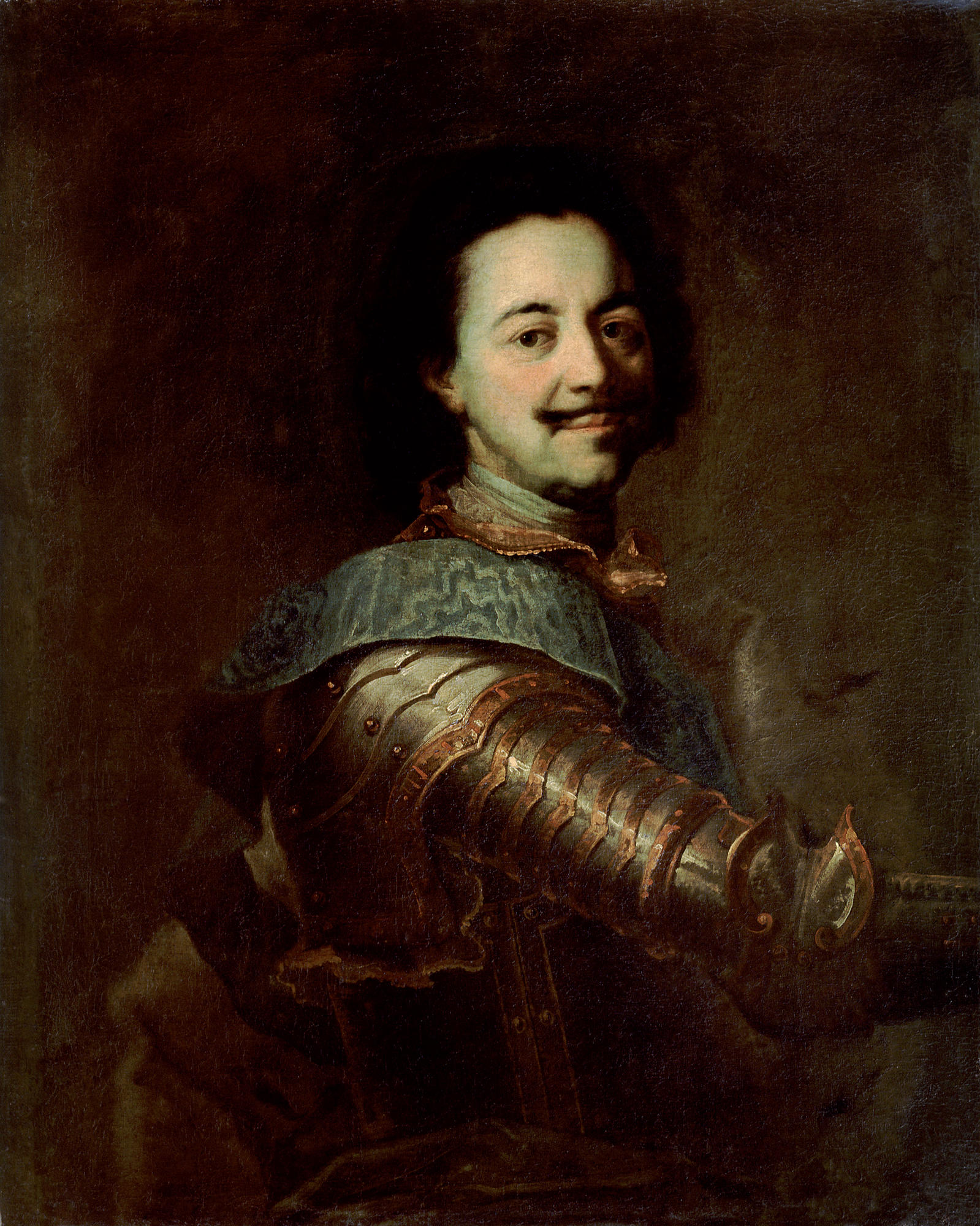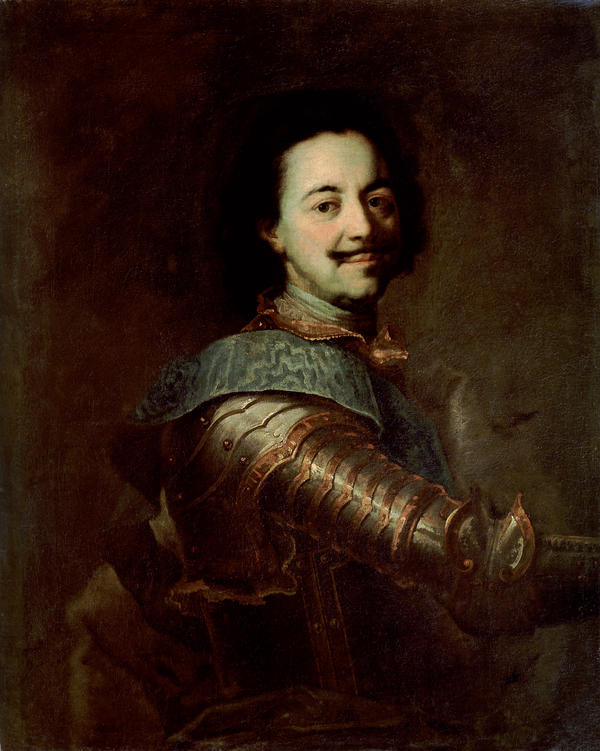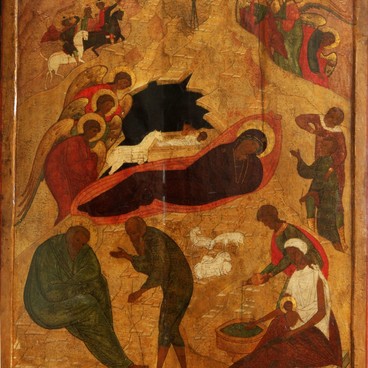The story of this portrait, depicting the first Russian emperor, is unusual and mysterious, as mysterious and unusual was the personality of Peter I himself. In 1952, the portrait entered the collection of the Simferopol Museum of Fine Arts from the fund of the State Russian Museum.
The Russian tsar is depicted in this painting in a somewhat theatrical outfit - the knight’s armor alone, which by the 18th century had long come out of use, is pathetic enough. The author of the portrait thus sought to convey the social significance of his model. All the more surprising is the fact that the image of one of the most influential world political figures of the 17th and 18th centuries lacks any attributes of power. There is neither scepter, nor power in Peter’s hands, and there is no crown on his head.
But the figure of the tsar is filled with dignity, energy and internal straining. All this corresponds to the Peter’s personality, as we know it from memories of contemporaries, to descriptions of historians, and to his status. French artist Hyacinthe Rigaud, who is considered the author of the portrait - quite deliberately stripped the Russian emperor of attributes of power in order to focus the viewer’s attention on the personal merits of the model.
By 1717 - the year when the portrait of Peter I was painted - Hyacinthe Rigaud was already a very famous painter, who had worked at the French court for years. According to the version, recorded from the words of Nikolay Ivanovich Gretsch, which most historians neither confirm, nor deny, this painting was once presented to another Russian emperor - Nicholas I by Count Sergei Semenovich Uvarov. The latter in his turn had acquired the painting from Count Alexei Razumovsky.
In the Razumovsky family tradition was preserved that, in 1717 tsar Peter, before leaving Paris, where he had negotiated legal terms of ending of the Northern War, went to Rigaud’s workshop in his absence. Seeing his unfinished portrait on the easel, the tsar, without ceremony, cut out the circle with the image of his head and took it away. Later he gave that piece to his daughter, Elizaveta Petrovna, and she presented it to Alexei Razumovsky. When the portrait got to Count Uvarov, he ordered to stick the head on a new canvas and to paint the torso. The second part of the story is nothing more than a legend, since the canvas of the painting is solid without any signs of restoration.
The portrait was in the Romanov Gallery of the Hermitage until the October Revolution of 1917. The inventory book of the Simferopol Museum of Fine Arts indicates that in 1925 the portrait of Peter I came to the State Russian Museum from the State Hermitage Museum.
The artistic and historical value of the portrait is connected primarily with the talent of the author and with the skill with which he depicted Peter the Great. In the painting he appears before the audience not in a ceremonial outfit, but as a living person - Rigaud could see him this way at receptions at the court of Louis XV.
The Russian tsar is depicted in this painting in a somewhat theatrical outfit - the knight’s armor alone, which by the 18th century had long come out of use, is pathetic enough. The author of the portrait thus sought to convey the social significance of his model. All the more surprising is the fact that the image of one of the most influential world political figures of the 17th and 18th centuries lacks any attributes of power. There is neither scepter, nor power in Peter’s hands, and there is no crown on his head.
But the figure of the tsar is filled with dignity, energy and internal straining. All this corresponds to the Peter’s personality, as we know it from memories of contemporaries, to descriptions of historians, and to his status. French artist Hyacinthe Rigaud, who is considered the author of the portrait - quite deliberately stripped the Russian emperor of attributes of power in order to focus the viewer’s attention on the personal merits of the model.
By 1717 - the year when the portrait of Peter I was painted - Hyacinthe Rigaud was already a very famous painter, who had worked at the French court for years. According to the version, recorded from the words of Nikolay Ivanovich Gretsch, which most historians neither confirm, nor deny, this painting was once presented to another Russian emperor - Nicholas I by Count Sergei Semenovich Uvarov. The latter in his turn had acquired the painting from Count Alexei Razumovsky.
In the Razumovsky family tradition was preserved that, in 1717 tsar Peter, before leaving Paris, where he had negotiated legal terms of ending of the Northern War, went to Rigaud’s workshop in his absence. Seeing his unfinished portrait on the easel, the tsar, without ceremony, cut out the circle with the image of his head and took it away. Later he gave that piece to his daughter, Elizaveta Petrovna, and she presented it to Alexei Razumovsky. When the portrait got to Count Uvarov, he ordered to stick the head on a new canvas and to paint the torso. The second part of the story is nothing more than a legend, since the canvas of the painting is solid without any signs of restoration.
The portrait was in the Romanov Gallery of the Hermitage until the October Revolution of 1917. The inventory book of the Simferopol Museum of Fine Arts indicates that in 1925 the portrait of Peter I came to the State Russian Museum from the State Hermitage Museum.
The artistic and historical value of the portrait is connected primarily with the talent of the author and with the skill with which he depicted Peter the Great. In the painting he appears before the audience not in a ceremonial outfit, but as a living person - Rigaud could see him this way at receptions at the court of Louis XV.



